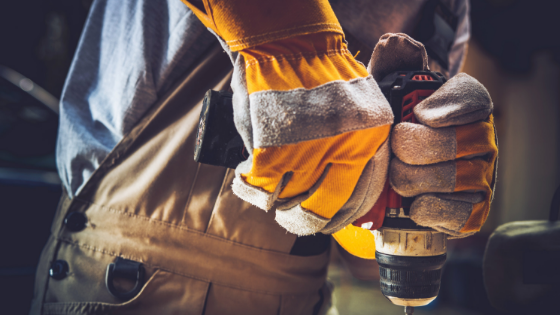Hands play an important role in the production labor process. However, hands are also parts that are easily injured, accounting for about 25% of the total number of industrial injuries. Fire, high temperature, electricity, chemicals, impacts, cuts, abrasions, and infections can all cause harm to hands. Mechanical injuries such as impacts and cuts are more common, but electrical injuries and radiation injuries are more serious and may lead to disability or even die. To prevent workers' hands from being injured during work, the role of protective gloves is particularly important.
Protective gloves inspection reference standards
In March 2020, the European Union published a new standard: EN ISO 21420: 2019 General requirements and test methods for protective gloves. Manufacturers of protective gloves must ensure that the materials used to produce their products do not affect the health of operators. The new EN ISO 21420 standard replaces the EN 420 standard. In addition, EN 388 is one of the European standards for industrial protective gloves. The European Committee for Standardization (CEN) approved version EN388:2003 on July 2, 2003. EN388:2016 was released in November 2016, replacing EN388:2003, and the supplementary version EN388:2016+A1:2018 was revised in 2018.
Related standards for protective gloves:
EN388:2016 Mechanical standard for protective gloves
EN ISO 21420: 2019 General requirements and test methods for protective gloves
EN 407 Standard for fire and heat resistant gloves
EN 374 Requirements for chemical penetration resistance of protective gloves
EN 511 Regulatory standards for cold and low temperature resistant gloves
EN 455 Protective gloves for impact and cut protection
Protective gloves inspection method
In order to protect consumer safety and avoid losses to dealers caused by recalls due to product quality issues, all protective gloves exported to EU countries must pass the following inspections:
1. On-site mechanical performance testing
EN388:2016 Logo Description

| Level | Level1 | Level2 | Level3 | Level4 |
| Wear revolutions | 100 rpm | 500pm | 2000pm | 8000pm |
1.1 Abrasion resistance
| Level | Level1 | Level2 | Level3 | Level4 | Level5 |
| Coupe Anti-cut test index value | 1.2 | 2.5 | 5.0 | 10.0 | 20.0 |
| Level | Level1 | Level2 | Level3 | Level4 |
| Tear resistant(N) | 10 | 25 | 50 | 75 |
| Level | Level1 | Level2 | Level3 | Level4 |
| Puncture resistant(N) | 20 | 60 | 100 | 150 |
| Level | Level A | Level B | Level C | Level D | Level E | Level F |
| TMD(N) | 2 | 5 | 10 | 15 | 22 | 30 |
The TDM cutting test uses a blade to cut the glove palm material at a constant speed. It tests the walking length of the blade when it cuts through the sample under different loads. It uses precise mathematical formulas to calculate (slope) to get the amount of force that needs to be applied to make the blade travel 20mm. Cut the sample through.
This test is a newly added item in the EN388:2016 version. The result level is expressed as AF, and F is the highest level. Compared with EN 388:2003 coupe test, TDM test can provide more accurate working cut resistance performance indicators.
5.6 Impact resistance (EN 13594)
The sixth character represents impact protection, which is an optional test. If the gloves are tested for impact protection, this information is given by the letter P as the sixth and final symbol. Without P, the glove has no impact protection.

2. Appearance inspection of protective gloves
-Manufacturer name
- Gloves and sizes
- CE certification mark
- EN standard logo diagram
These markings should remain legible throughout the life of the glove
3. Protective gloves packaging inspection
- Name and address of manufacturer or representative
- Gloves and sizes
- CE mark
- It is the intended application/usage level, e.g. "for minimal risk only"
- If the glove only provides protection to a specific area of the hand, this must be stated, e.g. "palm protection only"
4. Protective gloves come with instructions or operating manuals
- Name and address of manufacturer or representative
- Glove name
- Available size range
- CE mark
- Care and storage instructions
- Instructions and limitations of use
- List of allergenic substances in gloves
- A list of all substances in gloves available upon request
- Name and address of the certification body that certified the product
- Basic standards
5. Requirements for harmlessness of protective gloves
- Gloves must provide maximum protection;
- If there are seams on the glove, the performance of the glove should not be reduced;
- pH value should be between 3.5 and 9.5;
- Chromium (VI) content should be lower than the detection value (<3ppm);
- Natural rubber gloves should be tested on extractable proteins to ensure they do not cause allergic reactions in the wearer;
- If cleaning instructions are provided, performance levels must not be reduced even after the maximum number of washes.

The EN 388:2016 standard can help workers determine which gloves have the appropriate level of protection against mechanical risks in the work environment. For example, construction workers may often encounter the risk of wear and tear and need to choose gloves with higher wear resistance, while metal processing workers need to protect themselves from cutting injuries from cutting tools or scratches from sharp metal edges, which requires choosing gloves with a higher level of cut resistance. Gloves.
Post time: Mar-16-2024





